Welcome to Riding Nerdy, TNW’s fortnightly dive into bicycle-based tech, where we go into too much detail and geek out on all things related to pedal-powered gadgets.
Despite everything that’s going on in the world at the moment, I have been very lucky. Here in the Netherlands, we’re still allowed to go cycling, so long as it observes social distancing. Which is just as well, because last week, the folks at German online-only direct-to-consumer bike manufacturer Canyon, sent me a brand-spanking new race bike to put through its paces.
Before diving in deep, in typical Riding Nerdy fashion, here are my first thoughts:
- Is it light? Yes, for a bike of this type, it’s desirably light.
- Is it fast? So far, yes.
- Is it affordable? It’s certainly not cheap, but it does represent excellent value for money.
- Does it look good? The day I got the bike, I stood it in front of my TV, and just sat looking at it for a while. This is one of the most gorgeously finished bikes I’ve ever seen.
- Is it practical? For a bike dripping in high-end tech, trickled down from bleeding edge products, it’s actually reasonably practical.
- Is it worth it? Well, that’s the million dollar question (or more accurately, the €5,499 question). To find out my answer, carry on reading and jump off that proverbial diving board of tech.
Let’s find out!
Besides its catchy name, what does Canyon say about its Ultimate CF SLX Disc eTap 8.0?
This bike is built on Canyon’s Ultimate CF SLX frame, which it positions as its top-flight, pro-level platform. CF standards for carbon fiber and the SLX bit is Canyon’s naming convention for its super-light frames.
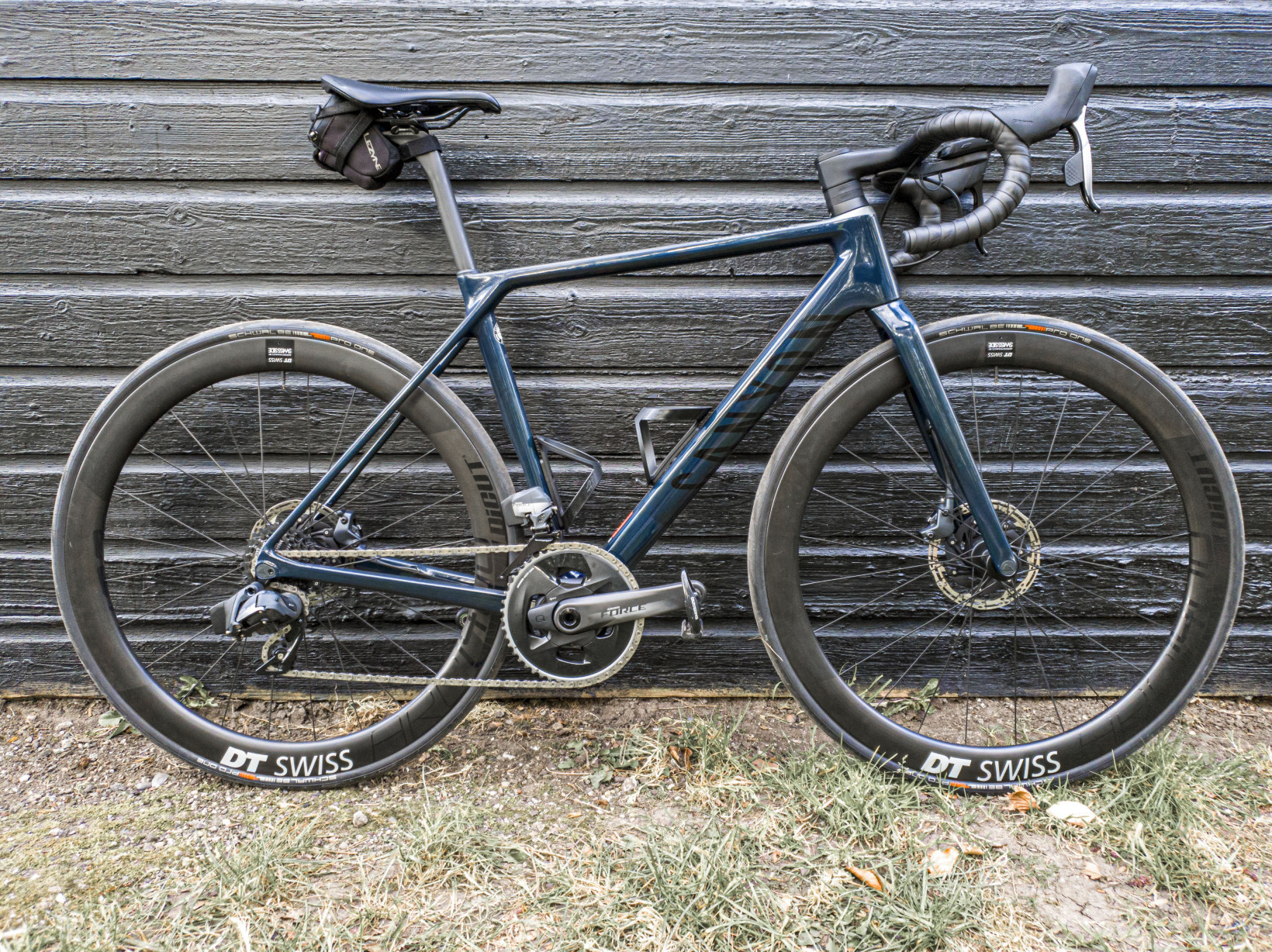
Naturally, it represents the stiffest, and lightest road frame in Canyon’s lineup. From riding the bike, it’s evidently clear that it’s a very stiff and light bike. But whether you actually need this, or should prioritize this over practicality and robustness, is something you should keep in mind.
The later part of the bike’s name — the Disc eTap 8.0 bit — tells us this bike has disc brakes, SRAM’s wireless electronic gear shifting, eTap, and where it sits in Canyon’s lineup in terms of spec level. It also has a power meter, as standard, which is something of a novelty. Power meters typically cost north of $500, if you were to buy the one on this bike aftermarket, you’d spend about $600. So to see it bundled in as part of this off-the-shelf build is pretty neat.
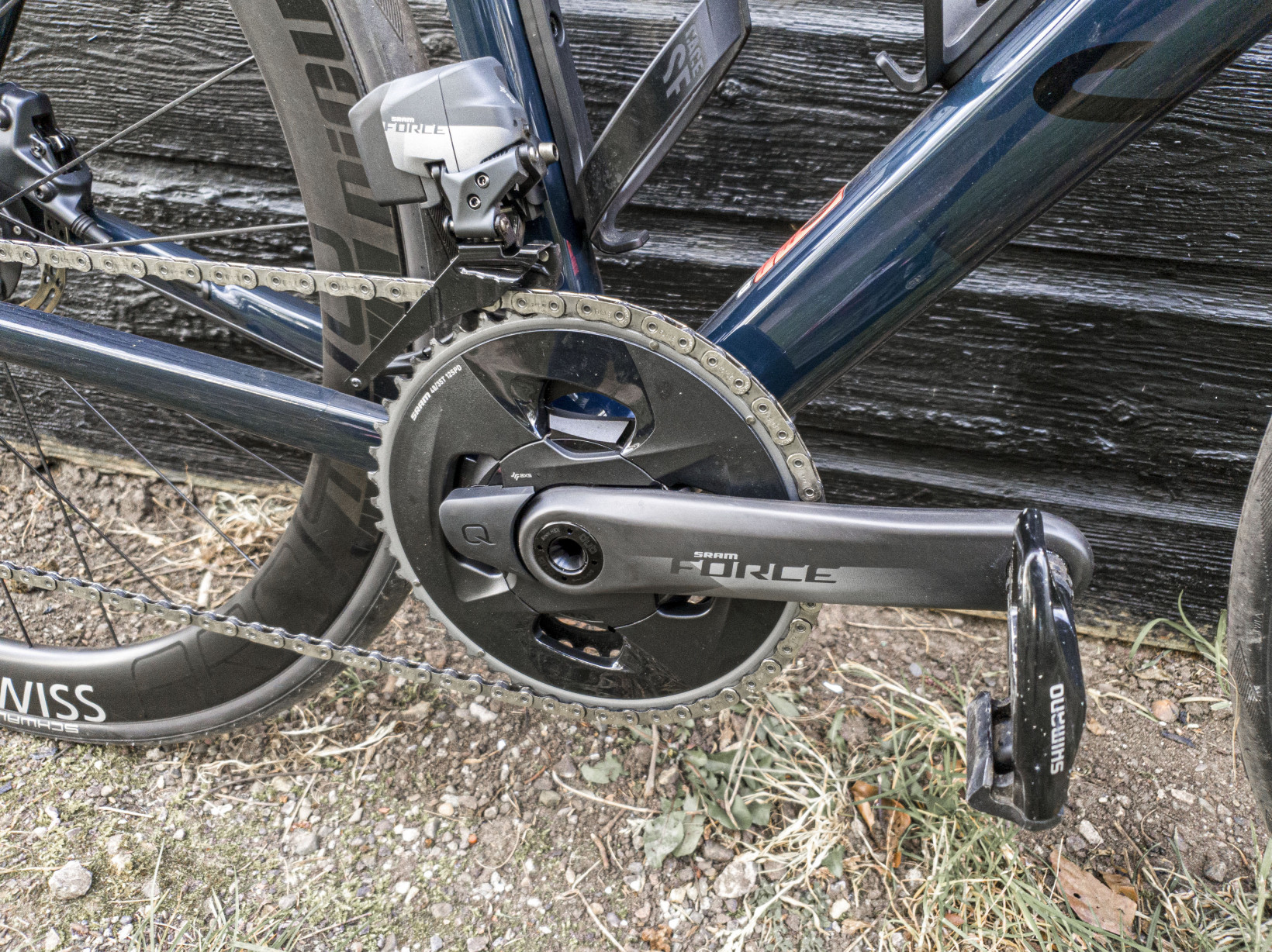
As you’d expect for a €5,499 bike (around $6,000), the Canyon is almost exclusively made from carbon fiber. Frame, wheels, seat post, handlebars, stem, cranks, are all made of that black, resin-impregnated wonder fabric.
The high-end carbon frameset is also dripping with trickle down tech from the industry’s most talked about component brands. After the frame, the SRAM Force eTap AXS drivetrain takes center stage.
At the top end of the road bike world, electronic shifting is all the rage right now. After riding the Canyon, it’s easy to understand why.
Wireless gears, it’s the future, apparently
The biggest boon of eTap, is its lack of wires. The single biggest impact this has on the bike, is on its overall aesthetic.
I love a clean, organized, well put together bicycle, and the Canyon is a perfect example of that. There are no excess wires, cables, or fittings on the frame intended for gear cables. All of these little details leave the Canyon looking smooth, clean, and clutter free. It makes the bike look quite purposeful.
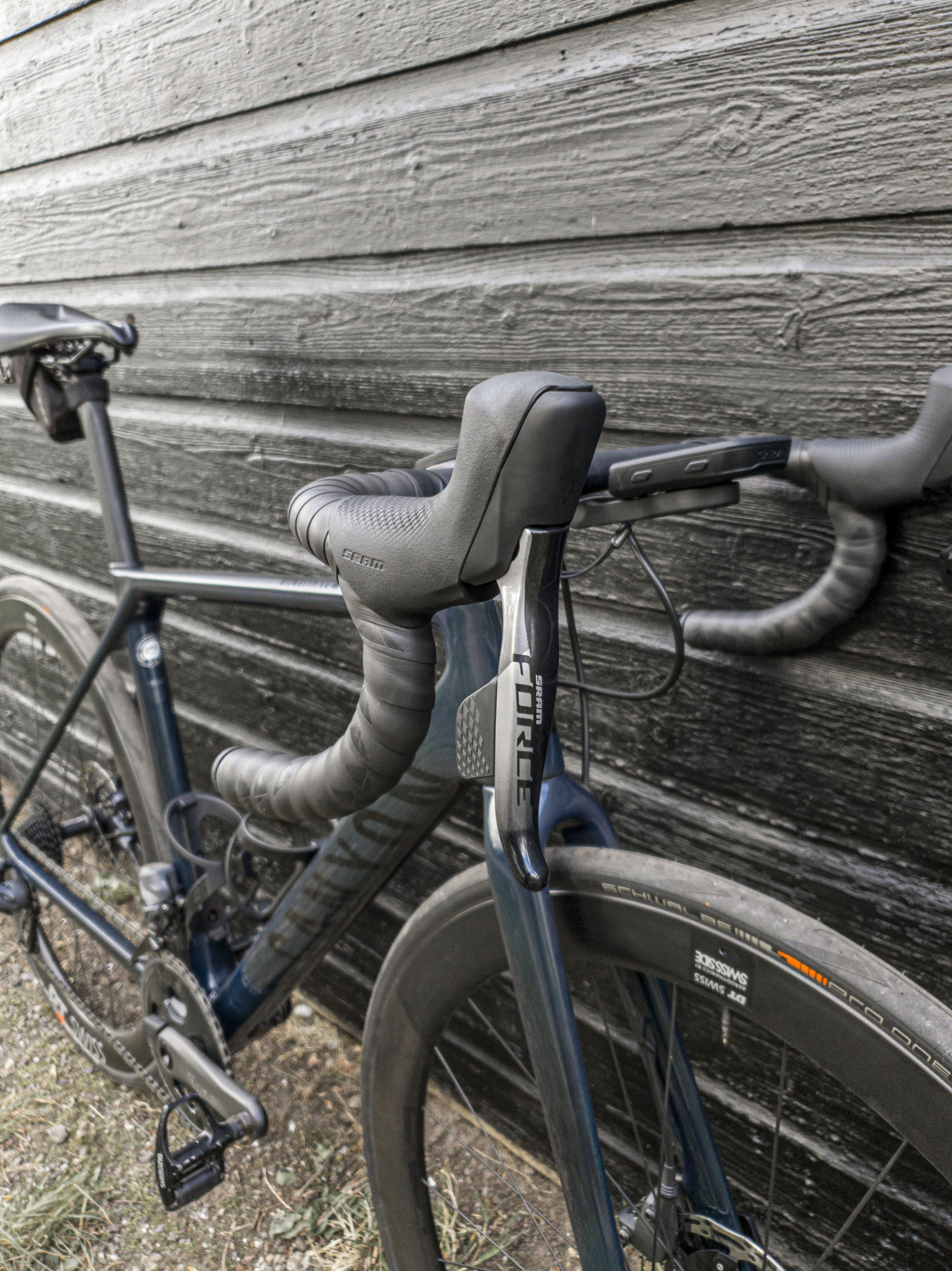
In the coming weeks I’ll write a more detailed review of the gears and drivetrain, but so far, shifting has been just as I expected, effortlessly spot on every single time. It’s also kind of sterile. You press a button, it changes gear, there’s no feedback, there’s no feel. If you value that feeling of your organic form meshing with the mechanics of the bike, you might not enjoy electronic shifting as much as others seem to.
One thing that did stand out to me, is the chain noise. Going over the bike’s setup, everything was dialed in as per manufacturer recommendations (good work Canyon), but no amount of fine-tuning would alleviate the noise. Typically, chains should be audible but not to the point where the sound becomes all consuming.
A quick internet search appeared to show this isn’t a one-off. Many others claim a similarly noisy drivetrain on this particular groupset, it’s not exclusive to Canyon. However, some do say it settles down in the first few hundred miles. And if I compare my first to last ride on the Canyon, I’d say it looks like it’s going that way. It might just need to “bed in.” But for what it’s worth, I’ve never experienced this kind of immediate noise with other groupset brands, or even other groupsets from SRAM for that matter.
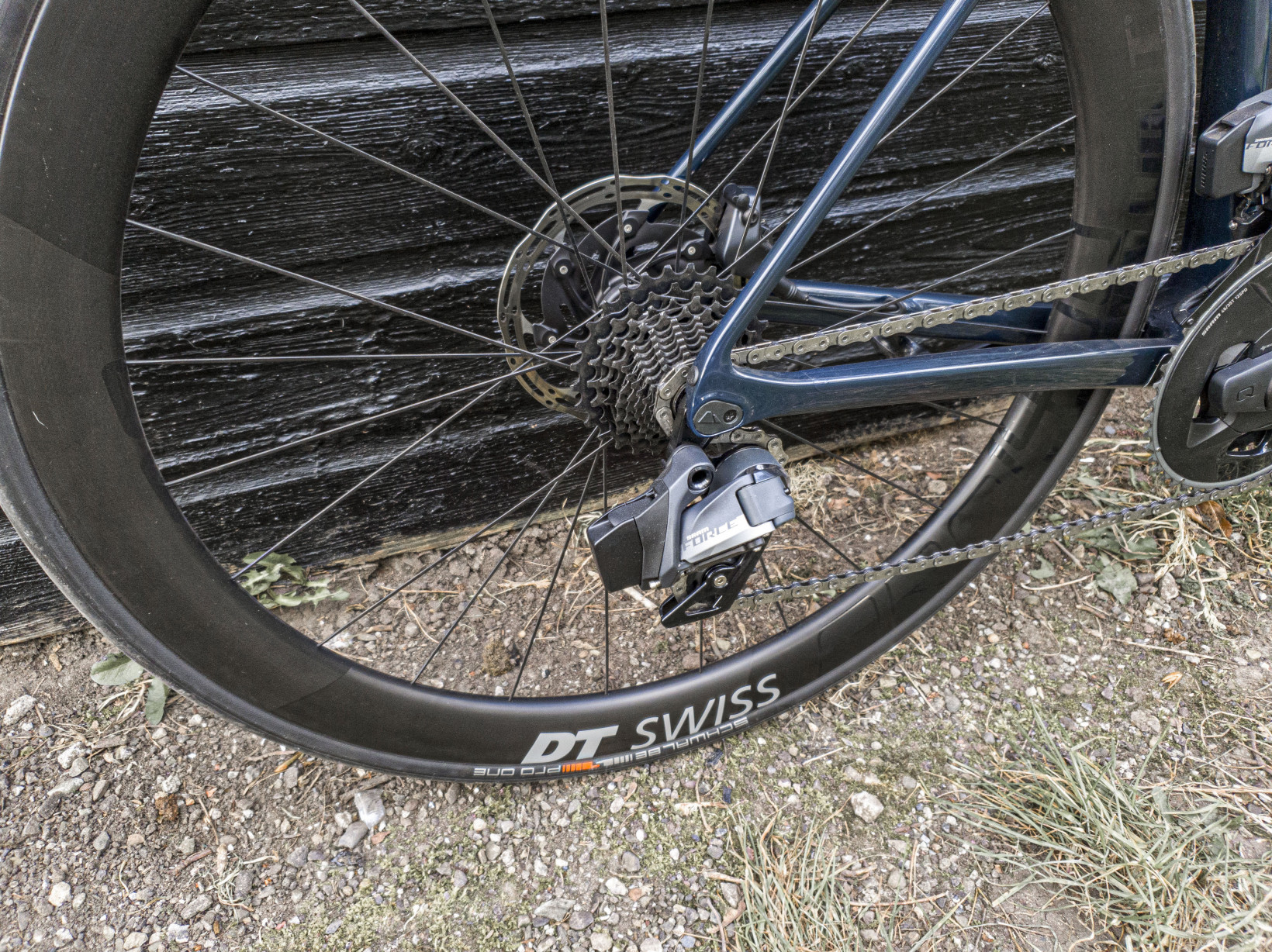
To be totally clear, it didn’t sound worrying, or like the chain was going to jump or skip, it was just usual, average, standard, typical chain noise, just amplified.
But this is literally the only mildly concerning thing to write about right now, and it’s not even that much of an issue once you get riding and have the wind rushing over your ears. But as someone who values a silent bike, I would be a bit perturbed if I’d spent over five grand of my own money.
The Canyon is wheely good
As I’ve sat gazing at the Canyon over the past week or so, I’m constantly drawn to its DT Swiss Arc 1400 Dicut wheels. They’re a classy looking affair, and feel impressively light considering their 48 mm deep semi-aerodynamic rim profile and aren’t designed to be ultra-lightweight. I have found them being a bit of a handful in typical Dutch crosswinds, but any wheels that have 48 mm or deeper rims are going to be, so this isn’t unusual.
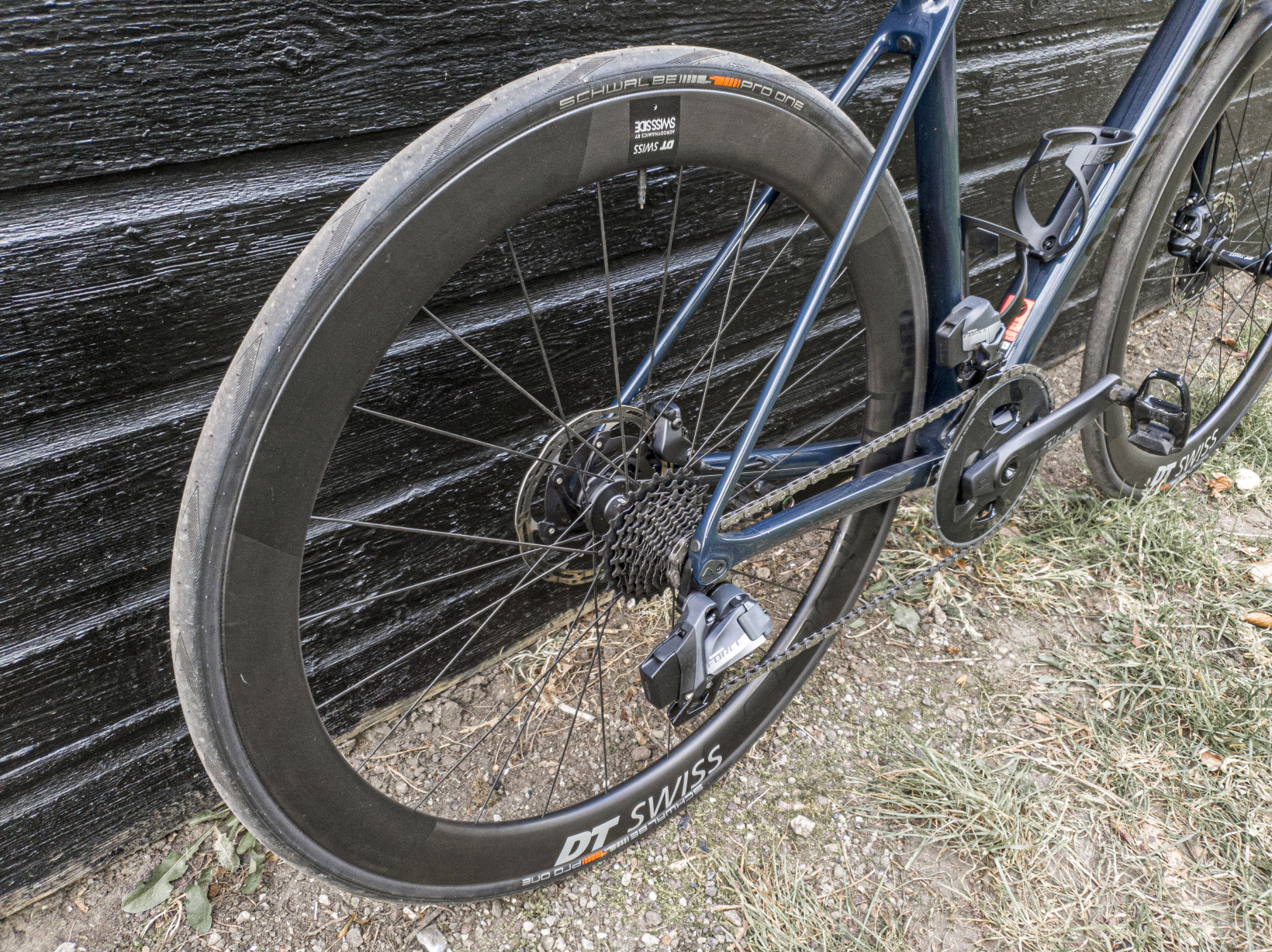
The wheels are shod with Schwalbe Pro One 25 mm tyres. I usually refuse to use anything other than Continental’s GP series on my own bikes. If it ain’t broke, don’t fix it. And in my experience, I’ve never had an issue with Contis; they’re fast, reliable, and have solid puncture protection.
The Schwalbes have saved my bacon more than a handful of times. On tight and winding corners, where I was pushing quite hard, and going in a bit too hot, they helped the bike stick to the road. If anything could pull me away from my beloved Continentals, it could be these. But the real teller will be if I can go an entire summer without a puncture on them, so let’s see how that one goes.
I was framed
For a bike of over €5,500, ($6,000) the frame has to be absolutely flawless in both performance and appearance. I think I’ve made it clear how visually pleasing the Canyon is, but let me do it one more time. The paint job — which Canyon calls Blue Tinted — is just gorgeous.
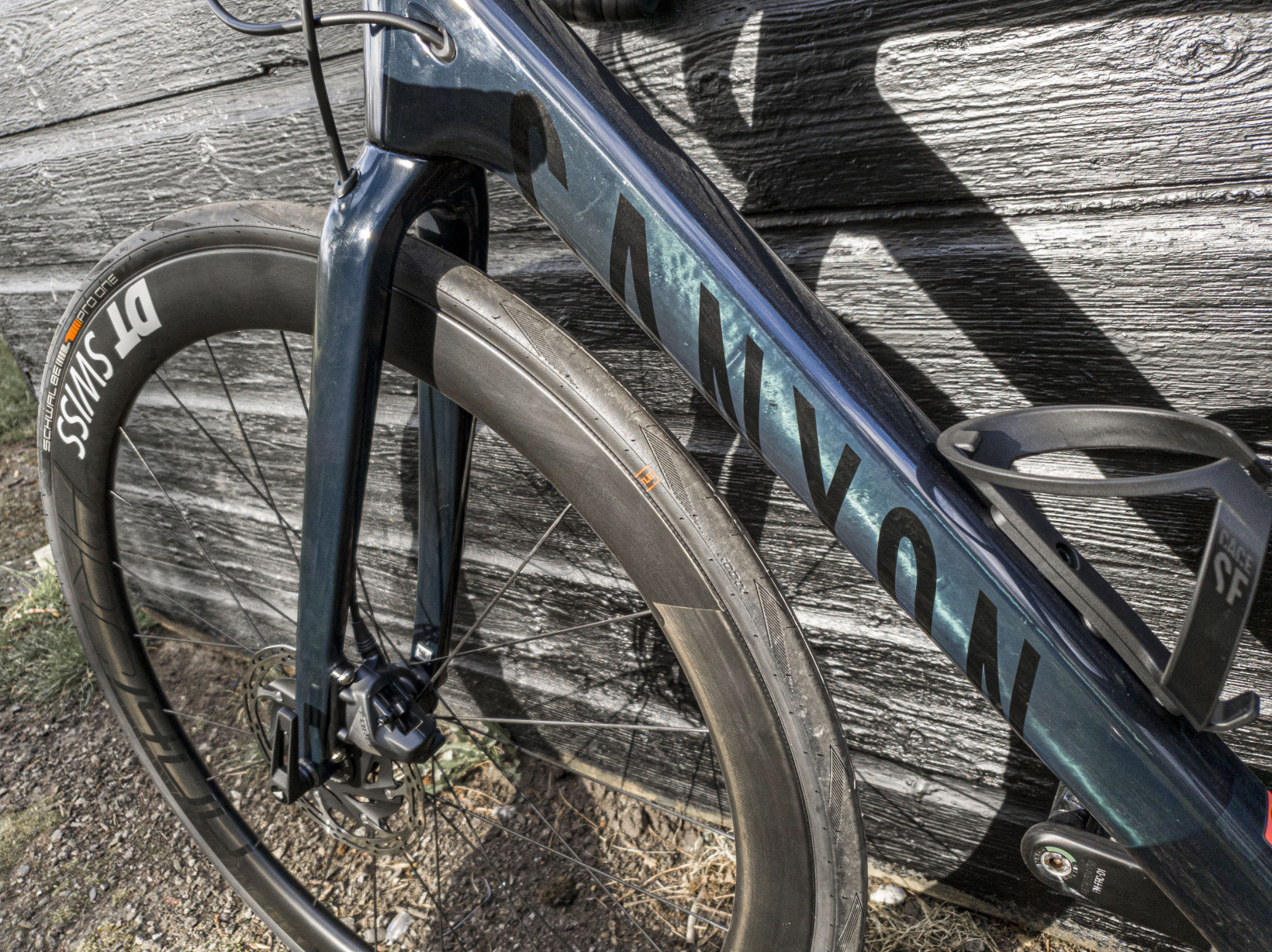
It has a deep blue pearl effect that only shows in certain light. In all other scenarios, it’s subdued and subtle. It’s as if it comes alive as you take it outside and get it rolling down the road, from under the trees, and into the sunlight.
The bike is a bit of a head turner when you pull up at the café, but it doesn’t scream “LOOK AT ME!” as you ride past. It’s a nice happy medium if you ask me — it doesn’t turn every head, but it turns the heads you want to turn.
It also rides wonderfully, too. I took the Canyon down some intentionally bad roads that have rough, broken surfaces, and cobblestones. The Canyon is smooth in these situations. Don’t get me wrong, you still know that you’re riding a stiff race bike down a crap road, but compared to entry-level bikes, it performs noticeably better.
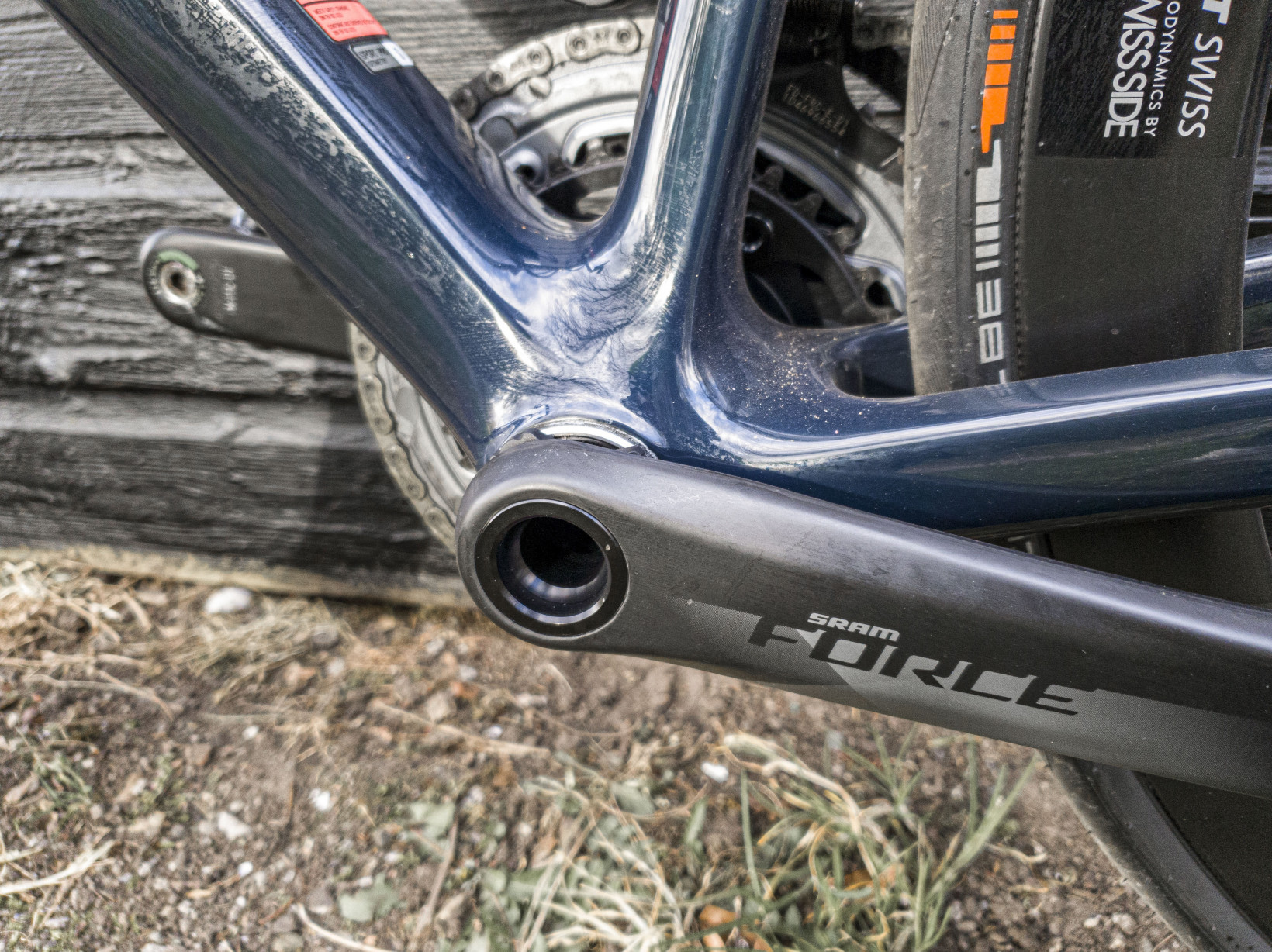
A lot of this can be down to geometry and frame design, as a bike’s handling stems more from that and its tube angles rather than just frame material. And if I had to put my finger one what I love most about this bike, it’s how it handles. I’ve been taking corners with tighter, faster lines than I would normally, and it’s a hell of a lot of fun.
Incidentally, you can get the same geometry and frame design on all of Canyon’s Ultimate CF bikes which range from €1,599 to €7,999. So if this price and spec level aren’t for you, there’s a good chance there’s another model that is. The best bit is you won’t sacrifice the handling or “fun” if you do opt for a less expensive model. Kudos to Canyon.
All in all, Canyon has put together a package that just works, without really making the rider know about it. Think of it this way, the Canyon is like a high-end sports car, that you could use every day.
Practicality isn’t totally sacrificed
There’s a danger when buying expensive bikes and components that you end up buying proprietary tech that might be expensive, difficult to maintain, not that versatile, and might not be supported in the future. That’s one of the prices you pay for top end performance.
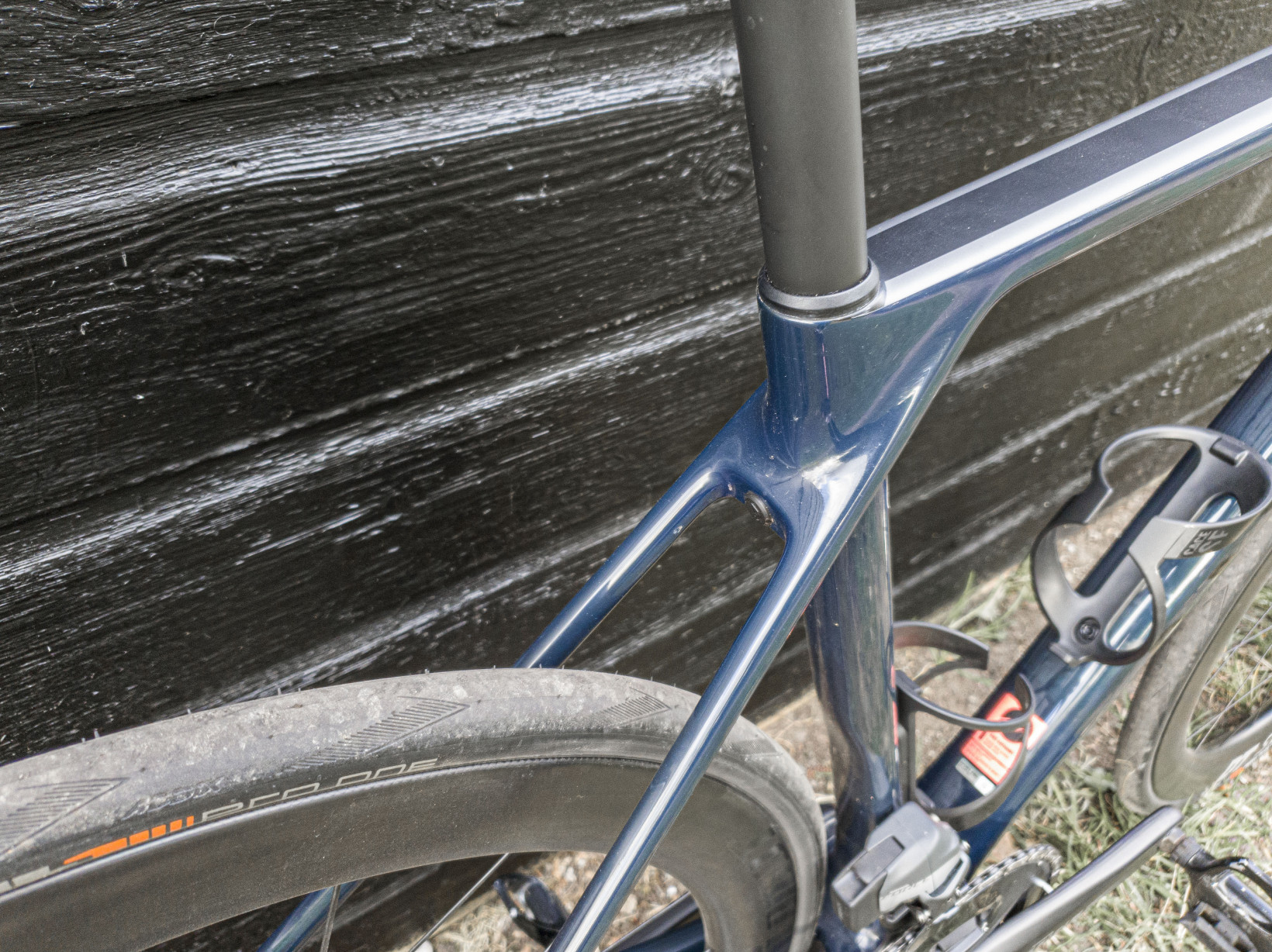
The frame is pretty versatile though. You could easily put 28 mm tyres, maybe even 30 mm, if you wanted a bit more comfort and puncture protection.
There are no nuts and bolts that can’t be adjusted with a simple toolkit. Canyon even includes two basic torque wrenches to make sure you don’t overtighten and damage any of the carbon fiber components — another nice touch.
The seat post is a standard round size. Should it get damaged, you’ll be able to find replacements quick and easy.
One thing to be aware of is the handlebars. They’re a one-piece unit, so their adjustability is limited. If you don’t like the angle of the flat, aerodynamic tops, bad luck, you’ll either have to adapt or change the whole handlebar stem setup. But for what it’s worth, I quite like their shape. Flat tops let you spread your weight across more of your hands, I’ve found them far less fatiguing than classic round bars.
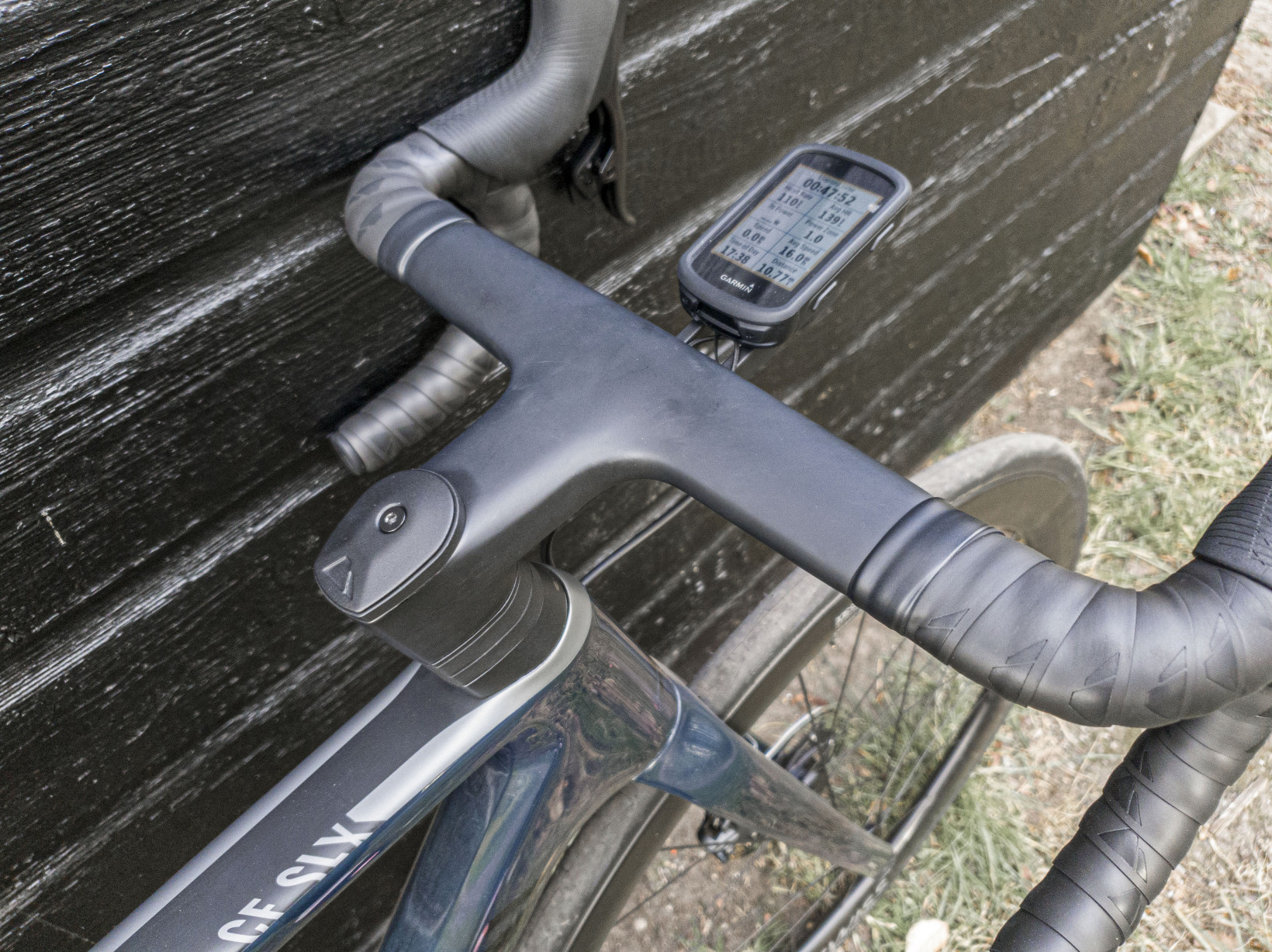
Something else to bear in mind, with not just this bike, but expensive bikes in general, is running costs. Some components of a bike will wear out and will need to be replaced, chains, cogs, brake pads, bearings, and so on. Generally speaking, these components don’t have to cost too much. But given the bleeding edge nature of SRAM’s 12-speed groupset, you’re tied into buying their cassettes — I’m not aware of any third-party options at present — and these aren’t cheap.
A quick look at a popular online bike shop shows they’re retailing at well over $140. For some, this might be an annoying recurring cost, but if you’re spending $6K on a bike to begin with, just know that level of expense isn’t a one-off.
What’s more, the 12-speed system uses a non-standard mount for the cogs on the rear-wheel. I say non-standard, it’s somewhat of a standard in the mountain bike world, but it does make choosing spare or replacement wheels a bit more of a headache than it used to be.
Stop rambling and tie it up
Let me make it clear, this is an aggressive race bike, so when I say it’s smooth, and comfortable, this is in the context of other aggressive race bikes. If you’re really worried about comfort, it’s not that I’d say this Canyon isn’t for you, it’s that race bikes probably aren’t for you. Indeed, I don’t think this bike is for everyone.
Are you a casual rider who is super into the sport, but only really races themselves on Zwift and Strava? Then I’d say this bike is probably a tad aggressive.
You’d be far better served by Canyon’s fast and light endurance oriented models in its Endurace lineup. Those machines are slightly higher at the front end, so you don’t have to contort yourself and bend double to reach the handlebars comfortably.
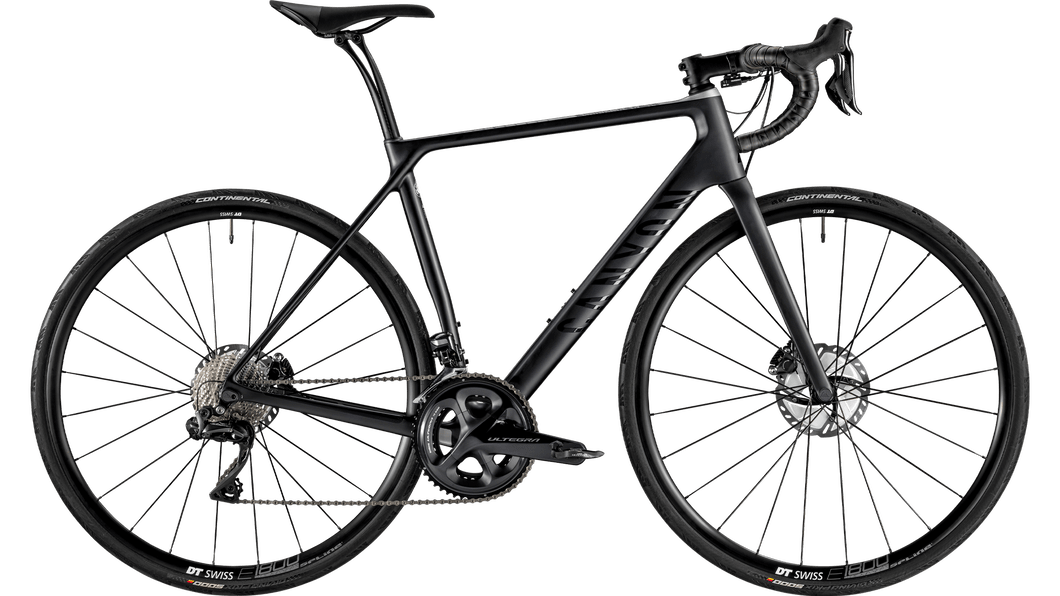
Sure the Canyon is a mightily expensive bike, but it leaves virtually no stone unturned in the pursuit of performance. Comparing it to other bikes around this price point and spec level it’s also very competitively priced. Overall, Canyon has managed to balance performance with practicality with affordability. A very tricky feat.
While it’s not the absolute top-level bike in Canyon’s line up, for the average rider, who is probably carrying a bit of extra timber themselves — let’s be honest — there is no real need to buy more than this. But if you’re a privateer racer, this could give you winning edge for less cash than the competition.
As I mentioned at the top, Canyon are online and sell direct-to-consumer, meaning you don’t really get a chance to see your bike before buying it. It also means that you have to do some minor assembly as the bike comes in its own special cardboard box. For seasoned riders, this won’t cause any issues, for newcomers to the sport there are tons of instructional videos on YouTube (made by Canyon) to help with this.
Honestly though, if it was my own money on the line, I would drop down to Canyon’s SL level carbon frameset and save myself a few grand. Canyon’s SL level bikes seemingly represent even better value for money. For about €3,300 (around $3,600) you could have electronic shifting, disc brakes, the same great handling and geometry, and a bike that looks basically the same as the CF SLX. It would also be cheaper to maintain.
What’s more, you’d also have plenty of money left over to buy, your own power meter, or even another bike entirely. Did I mention Canyon also makes ebikes, gravel bikes, and mountain bikes? For me, two bikes will always be better than one.
If I was a successful racer that actually won money by racing my bike I would easily be able to justify owning a bike like the Canyon. It really is a stunning bike at a market beating price, and I’m sure anyone who buys one, will love it dearly. The harsh reality though, is that it’s a far better bike than most of us will ever be cyclists.
For more gear, gadget, and hardware news and reviews, follow Plugged on Twitter and Flipboard.
Published April 2, 2020 — 08:18 UTC
"expensive" - Google News
April 02, 2020 at 03:26PM
https://ift.tt/2JzoaOY
Canyon’s latest race bike is hella expensive — but you get what you pay for - The Next Web
"expensive" - Google News
https://ift.tt/2GwwnlN
Shoes Man Tutorial
Pos News Update
Meme Update
Korean Entertainment News
Japan News Update
Bagikan Berita Ini














0 Response to "Canyon’s latest race bike is hella expensive — but you get what you pay for - The Next Web"
Post a Comment